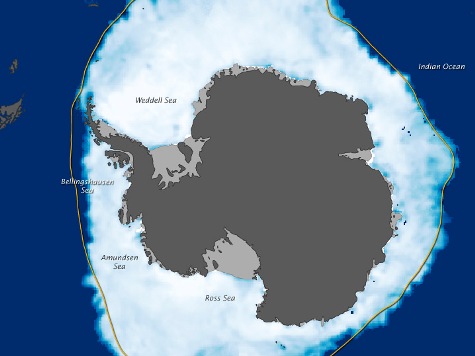As NASA scientists publish another report warning of the impact of global warming on the Antarctic ice shelf, new figures have been released showing that the level of sea ice around Antarctica has hit record levels.
According to Australia’s National Snow and Ice Data Centre (NSIDC), Antarctic sea ice grew by a record amount this April, increasing by a rate of more than 110,000 sq km (42,471 sq miles) per day to a total of nine million sq km (3.5 million sq miles).
The NSIDC said that rapid expansion also continued into this month, and the seasonal cover was now bigger than the record amount “by a significant margin”.
The previous record was set in April 2008, but this year has surpassed that by 320,000 sq km (123,552 sq miles).
The biggest growth in sea ice occurred in the Weddel Sea area, with temperatures one or two degrees below average for this time of year.
The increasing ice cover in the Antarctic has surprised many scientists. Last December, a ship carrying climate scientists got stuck in an ice pack about 1,500 miles south of Tasmania. Getting stuck in record ice cover was especially ironic, given they intended to document how ice had decreased thanks to global warming.
The record ice levels will make awkward reading for the NASA scientists who today said that the Antarctic ice shelf is in the process of collapsing and that the Antarctic ice melt appears “unstoppable”.
Eric Rignot, lead author of the report, said: “Today we present observational evidence that the [ice sheet] has gone into irreversible retreat. It has reached the point of no return.”
He blamed global warming for the phenomena, but also admits that the entire west Antarctic ice sheet could have melted some 500,000 to 600,000 years ago – without the help of man-made global warming.

COMMENTS
Please let us know if you're having issues with commenting.